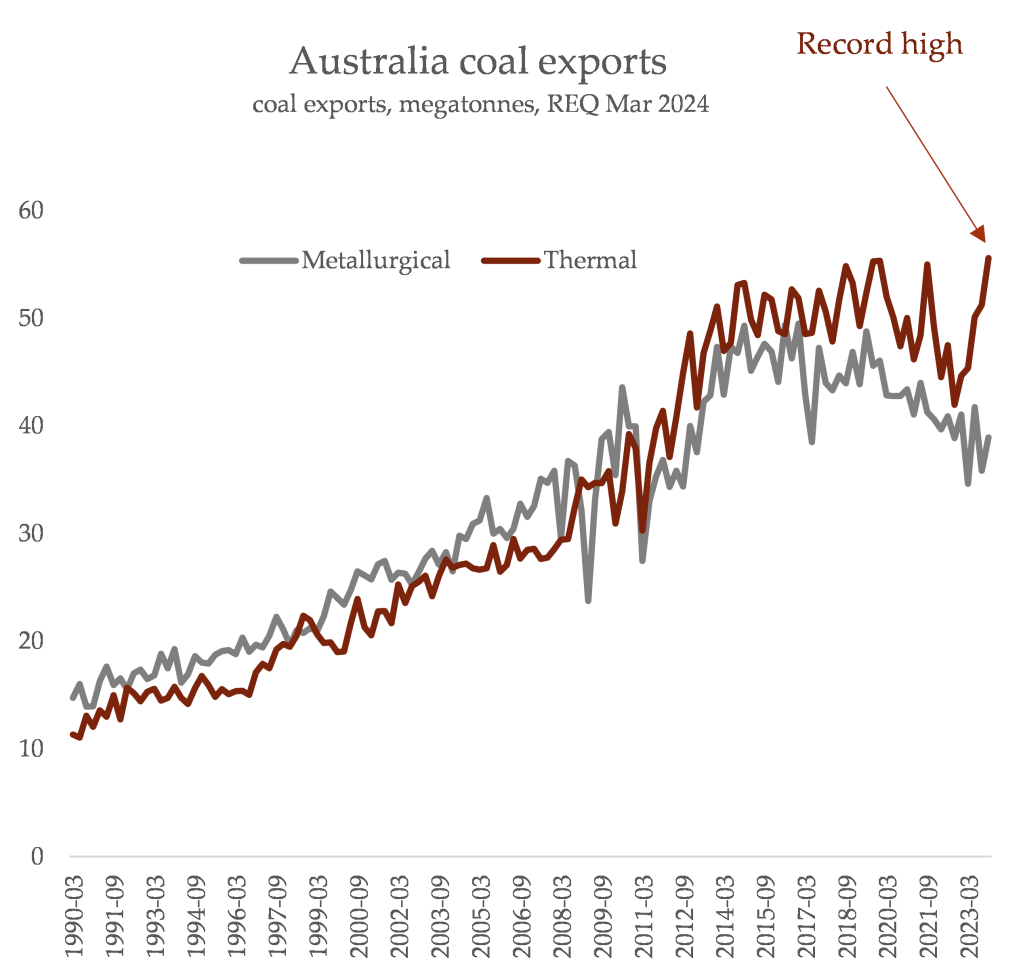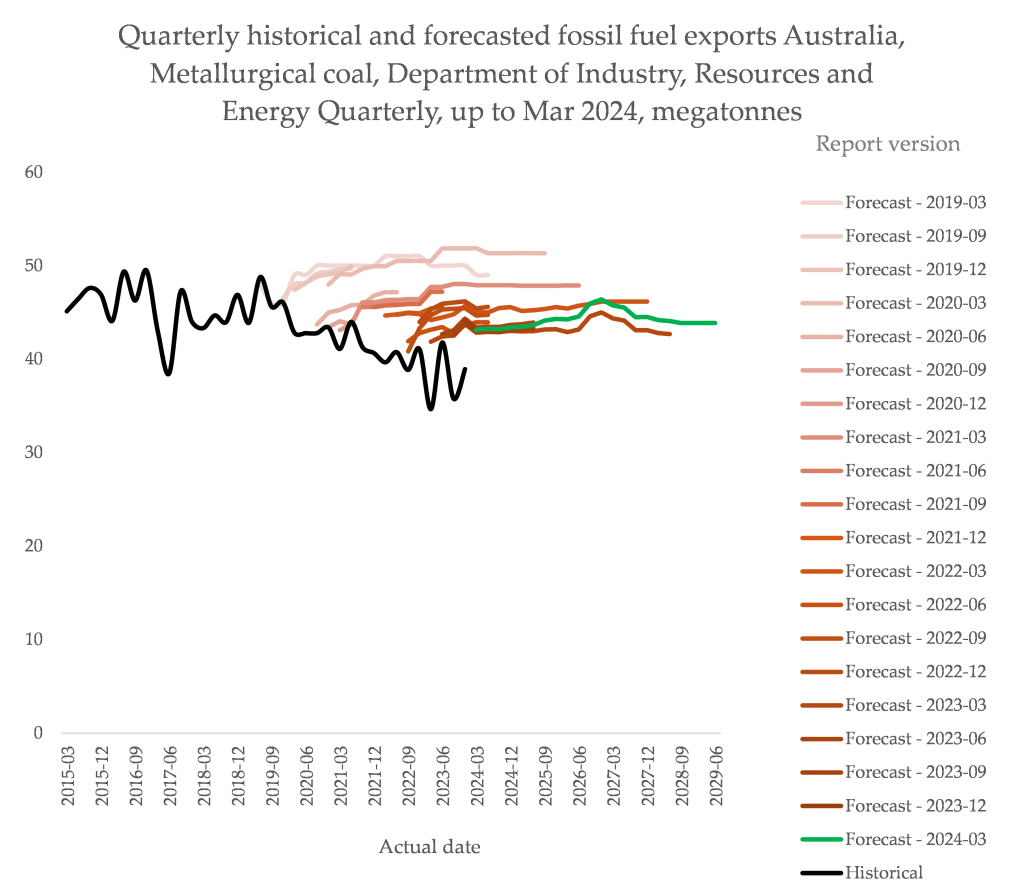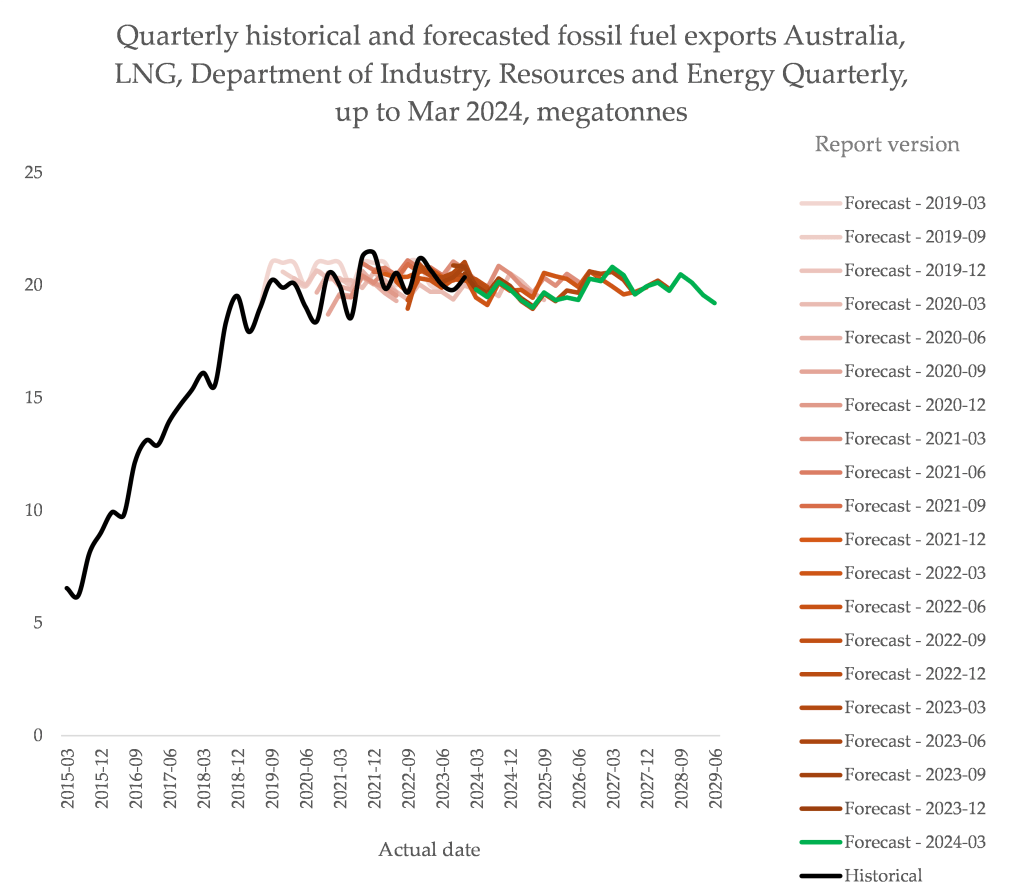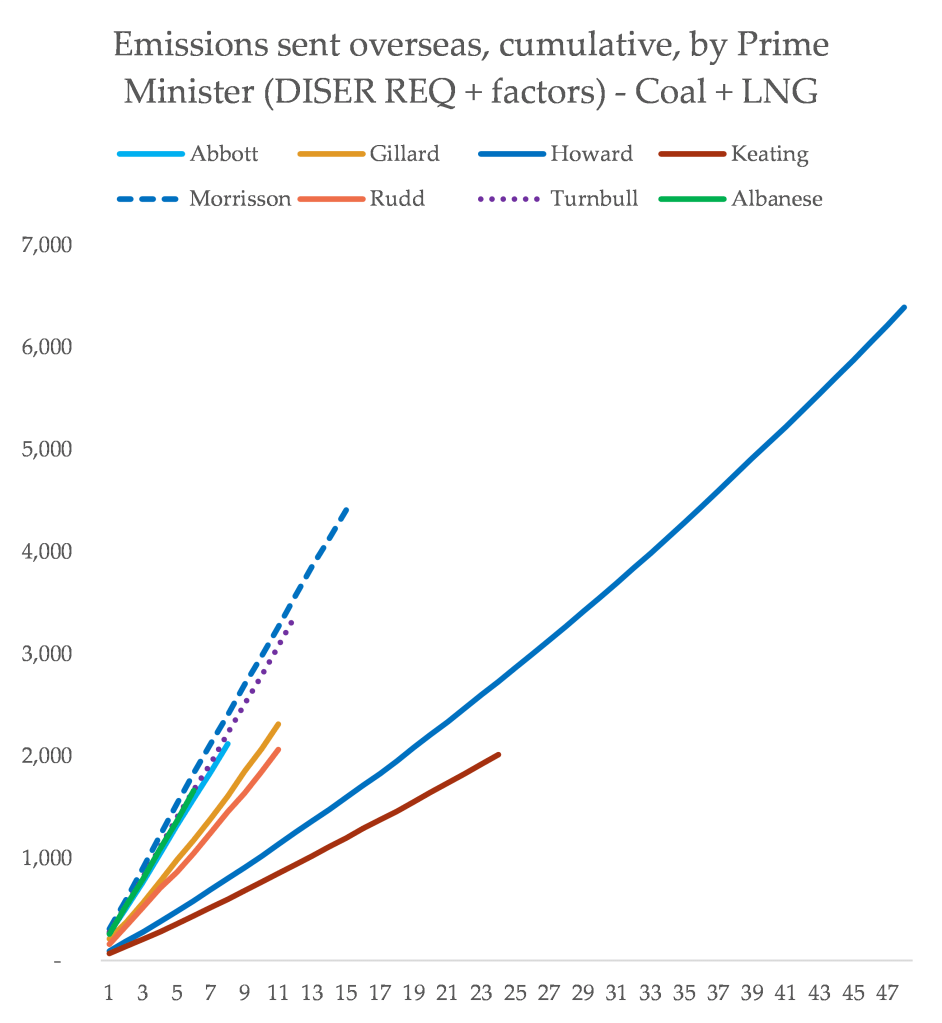Anthony Albanese: the future fossil export king of Australia
In a break from tradition, Australia’s government dropped some good news in the days before the long weekend Easter break. It’s a time usually reserved for ‘taking out the trash’: dropping news items you don’t want covered by journalists eager to clock off for their holidays.
Australia’s government says it wants to build solar panels, instead of importing most of them from overseas – and is funding a boost for local manufacturing of solar:

While they don’t mind handing cash to support renewable development or deployment in Australia (generally a good thing) this doesn’t reduce any desires they have to continue exporting coal and gas to other countries. It does not change their targets to only marginally reduce the burning of coal, oil and gas within Australia during the ‘critical decade’ before 2030. The nationalistic tone of Australia as a “renewable energy export superpower” is in addition to being a fossil fuel superpower, not in replacement of it.
So: this pre-Easter period was nicely representative of the government’s attitude on climate. Because while they did announce some good news, they also still took out the trash. And it’s bad trash.
The day before the solar announcement, late in the evening, the government quietly released the news that they had approved the Barossa gas pipeline. This thing is infrastructure for the single largest new fossil gas project in Australia, something which will cause both domestic and exported emissions to increase very significantly. Not good.
Here’s something else that got nudged out the door during traditional trash time: the latest update to the government’s quarterly resources report revealed that December 2023 saw Australia export the most amount of thermal coal it has ever exported in a single quarter. Also not good.

Up until about early 2022, both thermal and metallurgical (for making steel) coal exports were declining. But while metallurgical decline has continued, thermal coal’s decline has not. I previously enjoyed highlighting the way the government department persistently forecasted a thermal coal export recovery that never came – but here we are at the end of 2023 and it has come. They were right, I was wrong. But they’re right in a morally gruesome way: Albanese’s government is overseeing a resurgence in supply of the worst, most easily replaceable fossil fuel.
For December 2023, more thermal coal was exported than projected for that quarter in all but two of the previous forecast versions:


Metallurgical coal exports and liquified “natural” gas (LNG) haven’t shifted much, though metallurgical coal exports have somewhat levelled off. LNG is set in stone at its very high level.


Rising thermal coal, falling metallurgical and steady gas exports add up to a near future forecast from the government resources department of steady exported emissions over the coming years. But even this understates how bad things are.
Everything adds up
When Anthony Albanese was elected, he pledged to “end the climate wars”. What this has translated to in real life is a successful effort to feign climate ambition while every performance metric has either gotten worse, or improved only a little. Renewable energy development has ground to a halt, domestic emissions are creeping downwards far too slowly, and the fossil fuel export industry is buzzing with enthusiasm around its planned developments.
It’s hard not to notice that a collection of climate groups and media outlets that would have normally criticised and attacked the Coalition government for these things have stayed mostly quiet about the Albanese government. Maybe this is partly fear of spooking an obviously half-hearted government, but whatever the motivation, it means there is little awareness of how bad things are.
The consequence is this: the number of Australians who think the government is doing “enough” on climate change has hit a record high of 38% – overtaking dissatisfaction for the first time, it has been climbing steadily for years, and absurdly, so has the number of people who think the government is doing too much:

Let’s put Albanese’s massive fossil fuel supply machine in context. This shows the amount exported for every quarter, which I’ve labelled by Prime Minister and party:

Look – you need to remember something important. The greenhouse gases that’ll be released into the atmosphere when these fuels are burned accumulate in the atmosphere, like water filling up a bathtub. So let’s view each PM’s exported emissions record as they accumulated into their tenure as Australia’s head of state.
Under Albanese, Australia has exported the same cumulative amount of emissions in his first six quarters as the three most recent Coalition (the conservative party) Prime Ministers did. He has been mostly indistinguishable from Scott Morrison, Malcolm Turnbull and Tony Abbott, when it comes to the sale of the cause of climate change:

Let’s zoom out a bit – looking at the full ‘added up’ emissions for every PM since 1990. John Howard didn’t oversee a time with particularly high fossil exports, but he was in power for a long time, and as such, he’s got the worst climate damage export burden hanging over his head:

The data above show the build-up of exported emissions for coal and gas. When you look only at gas, Albanese and Morrison really stand out, and Albanese just edges out to be number one:

Albanese’s first term so far has been competitive with the worst Coalition ghouls in terms of being a supplier of fossil fuels to the world, and particularly so for fossil gas, which the government is actively trying to facilitate.
So what’s the plan for the future?
The long term thinker
Labor has a single, clear philosophy when it comes to industries that supply the cause of planetary heating: hands off, unless your hands are carrying a massive bag of subsidies for fossil fuel companies.
Will the government resources department’s forecasts come true? It depends heavily on how climate actions shape up in the next half-decade, particularly in Asian countries. But we know that the act of supplying fossil fuels influences how much eventually gets burned. A system of active, intense expansion of fossil fuel supply naturally leads to higher usage than a controlled phase-down of production, and the Labor government’s friendly planning decisions and generous subsidies help maintain the steady flow of dangerous fuel products into the world.
Let’s remember two things. First is that Albanese wants to be Prime Minister for a long, long time. He’s governing, according to a recent profile by Sean Kelly, with several terms in mind.
"On the day after the [2023] budget, Albanese was asked whether he was bold enough. He said that his aim was to lead a long-term Labor government that creates a better future, and that the budget was a step towards that. I hear this “long-term” refrain from almost everyone in government"
The second is that the March edition of the quarterly forecast includes an extra-long look into the future- this time, nearly to the end of the decade. If Albanese wins two federal elections in 2025 and 2028, he’ll be PM for the span of this report.
Which means the fossil export leaderboard may end up looking something like this:

If Albanese stays in power as long as Keating did he’ll knock John Howard off the pedestal as the single worst fossil-exporting PM in Australian history.
If the projections are realised to their end date nearly to 2030, Albanese will have accumulated a carbon debt in 7 years that is 30% worse than what took John Howard 12 years to earn.
This is Labor’s vision out to the closing hours of the critical decade for climate action. It isn’t rare: Norway, America, Canada, the UK – all scrambling to present themselves as global climate leaders while also scrambling to oversupply the cause of climate failure. Add up the plans and projections of governments around the world supplying fossil fuels, and you get a picture of the overheated world these leaders are trying to make a reality:

The end result of this dynamic is a government that will proudly stroll into the history books as the overseers of massive and prolonged supply of a deadly, outdated and dangerous product, into a world that was trying to give it up as a quick as possible. Anthony Albanese: the grinning king of climate disaster.

Received your article above via a colleague (our U3A* climate science teacher). We study climate science together, but also discuss politics and psychology, and wonder aloud to each other how we can exert our influence to change this truly abysmal situation.
Although science and clear sighted reasoning do not win arguments with some people, we know we still have to know the science and remain calm & clear sighted as we speak and dialogue, because we just never know when or how we can break through somewhere somehow.
Fortunately the science is fascinating as well as grim in its implications, and so too is the engineering science behind solar, batteries and wind energy. So thank you Ketan for the inspiration here, grim though the implications be.
* U3A = University of the Third Age.
John McKeon
Ipswich, Queensland
LikeLiked by 1 person
Hi Ketan,
Thank you for this – and generally for the massive amount of important research you are doing.
The graph with the Quarterly Exported Emissions (under where you write: “This shows the amount exported for every quarter, which I’ve labelled by Prime Minister and party:” – what is the data source for this graph?
(I had a look through the Resources and Energy Quarterly report, but couldn’t find anything resembling it).
Kind regards
Mik
mikaidt@climatesafety.info
LikeLiked by 1 person